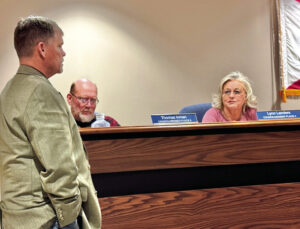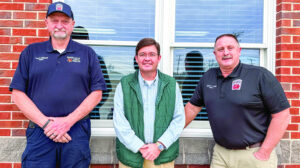What to do about fire ants
By By Gail Barton / horticulture columnist
July 6, 2003
Fire ants, deluges and armadillos.
Our pattern of daily deluges is making it difficult to get out in the garden. I have a gardening "to do" list that grows longer by the day. Normally, my June task list would list "Fire Ant Control" as a top priority.
Luckily, our unseasonably wet weather has caused a decline in the mounds around my neighborhood. I know that new mounds will appear almost overnight as soon as the daily rains stop. Still I'm trying to enjoy the situation while I can!
The most troublesome fire ants are the Red Imported Fire Ants that arrived in Mobile, Ala., from South America in the 1920s. Despite a federal quarantine, nine southern states and more than 275 million acres have become infested with imported fire ants since then.
The figures are impressive but most of us detest fire ants because we have experienced their venom firsthand. When disturbed, fire ants become quite aggressive. They attack by gripping the skin in powerful jaws or mandibles and stinging the victim repeatedly.
Life cycle of fire ants
Generally it doesn't take much to provoke fire ants. Simply walking near a fire ant mound can trigger an attack. A typical fire ant nest is 12 to 18 inches across and 3 to 5 feet deep in the ground. The nest consists of a network of underground tunnels and chambers. After cool rainy weather in spring, the ants expand the nest to make a mound of loose soil above ground.
The ants live in this mound during warm weather when temperatures are optimal for raising a brood.
The brood varies greatly in appearance. The eggs laid by the queen hatch into worm-like larvae. The larvae feed hungrily until they metamorphose into immobile pupae. The pupae eventually transform into one of three types of adults.
Most mounds have one fertile female, or queen. The queen is the brain of the mound. If the queen lives, the mound will continue to grow and if she dies, the mound dies.
All the other ants in a mound except for a few winged fertile males are wingless sterile female workers. A nest a year or older can contain 100,000 to 300,000 workers.
How mounds spread
The workers excavate tunnels that extend out from the mound for several yards. Tunnels allow the workers to exit in all directions to search for food like insects, spiders, centipedes and earthworms.
When a foraging worker finds a new food source, she returns to the mound, leaving a chemical pheromone trail for other workers to follow.
For desert, fire ants feed on sugary honeydew given off by sap-feeding insects like aphids. Most fire ant colonies keep a "herd" of aphids. If you've ever been stung by fire ants while picking peas or okra, you've experienced the anger of fire ant workers protecting their herd of aphids.
A mature fire ant colony can produce several thousand queens each year. During warm spring weather, usually after a rainstorm, excess queens leave the mound with the males to establish new colonies.
Since the queen and males are winged, they fly from the nest and mate during flight. The male dies after mating and the queen flies on in search of an open sunny nesting site.
Only a small percentage of queens successfully start new mounds. If the queen is slucky, she finds an appropriate site, lands, sheds her wings and begins digging underground tunnels. She will lay her eggs in these tunnels within one or two days of mating. These eggs produce the first generation of workers. After that, the queen lays eggs continuously and the workers forage to feed the brood.
New fire ant colonies get off to a slow start. Generally they aren't even visible to us until about six months after the queen lays her first eggs. Colony expansion is especially slow this year with all the rain we've had.
So … thanks to the fire ants, I do have something good to say about all the rain and even about those pesky armadillos. Armadillos are ant-eater cousins. They do tear up the lawn, but I've got to grudgingly admire a creature that can eat fire ants!







